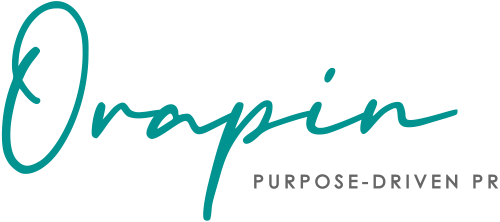
10 ways you can make PR a waste of your valuable time, budget, and resources
Time, budget, staff, expertise – these are all things we wish we had MORE of! As a marketer of a nonprofit or a purpose-driven business who understands the value of PR, you know you need to allocate resources toward the cause. If you’re like our clients, you don’t have unlimited personnel or budgetary resources to put towards your PR efforts so what you do decide to do needs to be worth it.
While we often talk about all the things you should do to maximize your results, extend your reach, and amplify your voice, we rarely talk about the things that you shouldn’t do. What activities are overrated? What is a colossal waste of time? What is a definite no-no? Read on to find out the top ten ways to waste time, budget, and resources.
How to make your PR efforts unsuccessful
1. Send press releases about inconsequential company updates
Unless you are Apple, product updates, new packaging, new taglines, new hires, new websites, and board members are not newsworthy. As an employee of the organization, would you even do more than skim this news in the internal newsletter? Probably not. And it’s not relevant to anyone else either so don’t make reporters mad by wasting their time trying to get them to cover topics that aren’t of interest or consequence to their audiences.
2. Pitch company events
Hosting a webinar? Golf scramble? Participating as a team in the local marathon? Guess what? Also not newsworthy! Should you share it with your existing audiences? Yes, absolutely. Put together a digital advertising campaign to promote it? Maybe. Share it on social media? If it’s interesting. Tell the press about it? In 99.9% of scenarios, no. There may be the .1% of instances where a beat reporter might want to attend a webinar if it will provide value for their area of focus. However, expecting that this reporter would share information about your webinar (or golf scramble or fun run) with their audience is unrealistic, so don’t waste time pitching it.
3. Send a generic, uncustomized pitch to an unvetted list of reporters
Sending a blanket press release is just bad practice and a waste of time. Sure, it’s easy, especially if you’ve shelled out a lot of money for a strategic comms tool like Meltwater or Cision. But we are here to tell you that the media lists generated by these tools should only be a starting point as they tend to be inaccurate and will include many reporters who are inappropriate contacts for your pitch. Further, a blanket pitch is going to look like it has been sent by a bot, as opposed to a real human, and will get ignored. As a best practice, vet each reporter and publication on your list and send a customized pitch to each.
4. Send pitches to the wrong contacts
Another PR no-no is sending pitches to inappropriate contacts. If the individual is the publisher, editor-in-chief, art director, or intern, then they should not be receiving your email. Don’t waste your time or theirs, find the correct reporter for your story.
5. Pitch experts on topics or opinion pieces that aren’t newsworthy or relevant to your organization
Most likely the CEO of your purpose-driven organization has tons of ideas to share and pitching them as a thought leader is a great idea. However, don’t waste their time or yours pitching their opinion on inconsequential or irrelevant topics. As with any pitch, you want to make sure it is timely, relevant, and newsworthy. Further, their opinion on the topic should move the needle in a positive way for your organization. Does your executive director have an opinion on rising interest rates? Great. But if your organization is on a mission to end childhood hunger, then sharing their opinion on fiscal policy is not going to support your organization’s PR goals.
6. Pitch unknown leaders for high-profile speaking engagements
Everyone wants to do a TED Talk. And that’s a great goal. But pitching your spokesperson for high-profile speaking gigs if they’ve never done it before is a waste of time. Unless they are a household name, they’ll need to build a speaker’s resume first. That means speaking at smaller events and building up a resume that includes rave reviews from audience members and event organizers alike. Spend your time going after low-hanging fruit to start, then build from there. Don’t forget, there is still value in speaking in front of smaller, yet highly targeted audiences!
7. Draft byline articles or op-eds that don’t say anything new
We always remind our clients that joining the conversation on a high-profile topic is a great way to build clout and support expert positioning. BUT – you have to make sure you are adding value to the conversation and not just contributing to the noise. Don’t waste time reiterating what others are saying. If you have a new perspective, fresh information, or personal experience that adds value for the audience, then by all means, please share! Otherwise, don’t waste your time.
8. Shell out hefty fees for award applications
Awards applications can be extremely time-consuming. Further, many come with a hefty application fee. Before dedicating the time and budget, make sure that winning the award will support your PR goals in a meaningful way. If it is just a feather in the cap or a feel-good moment for the leadership team, then it’s probably a waste of time.
9. Be inconsistent
PR is a long game. Sending one press release or pitch per year won’t yield results. You need to have a constant drumbeat of communication with your target reporters. Continuously send timely, interesting, and relevant stories their way and they’ll take notice. One good story will beget another and momentum will build. Truth be told, you can send out a great pitch, but the reporter may not have the time or bandwidth to cover the story right at that moment. Don’t let that be your only pitch for the year! Inconsistent effort in PR is a waste of time, keep reaching out and you’ll start to see results.
10. Don’t include a call to action
PR is a complement to your marketing strategy, as such, it should support your organizational goals. If you can tell a powerful story that pulls at people’s heartstrings, then make sure there is a way for them to support your organization. It is easy to add a call to action in any owned media piece. It is more difficult when you are relying on a reporter to tell your story for you. In most scenarios, a reporter will not include a “go to their website and donate now” kind of sentence. Their job is to tell the story. Your job is to coach your spokesperson on how to weave the call to action into their interview responses. Instead of saying “We love puppies, that’s why we created Puppy Rescue.” your spokesperson can say “We love puppies and want to save them all, our challenge is that we just don’t have enough volunteers to walk the puppies, but Puppy Rescue provides a safe haven for all the puppies we are able to support given our current space.”
Remember, your job is to provide a story so compelling that someone goes to your website to find a way to support you after they read the story. If they read a nice story about you and there is no way to interact with you past the story, you’ve wasted your time.
Put in the work where you’ll see the greatest impact
At the end of the day, we all want to see that our efforts have had an impact. PR is not just about shiny awards, splashy magazine spreads, or stroking egos. When done right, PR should help your organization grow. PR can support the bottom line by expanding your audience, reach, and impact. PR can help you go from the little, unknown neighborhood favorite to a well-respected and renowned multinational organization. Whether your monthly budget is tiny or huge, each and every activity you do should move the needle for the organization. Once you focus time and effort on the activities that yield results, you’ll see momentum build and you’ll be on your way to receiving the attention and support your organization deserves.

Rhiannon Hendrickson is the founder and CEO of Orapin, which helps purpose-driven organizations transform their random acts of PR into a strategic, consistent approach that generates greater awareness and impact. She has worked with organizations of all sizes across myriad industries and causes to develop earned media and thought leadership programs that generate awareness, engagement, and, ultimately, support for those that are making a meaningful impact.
